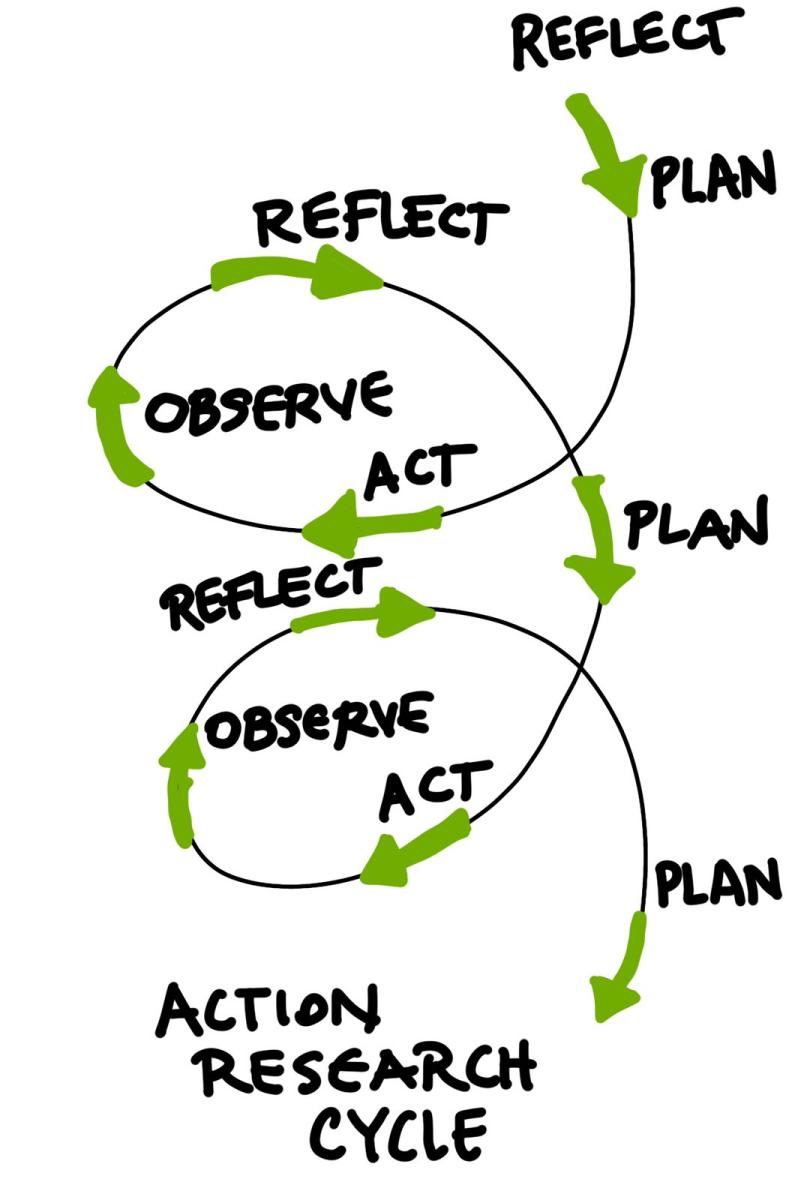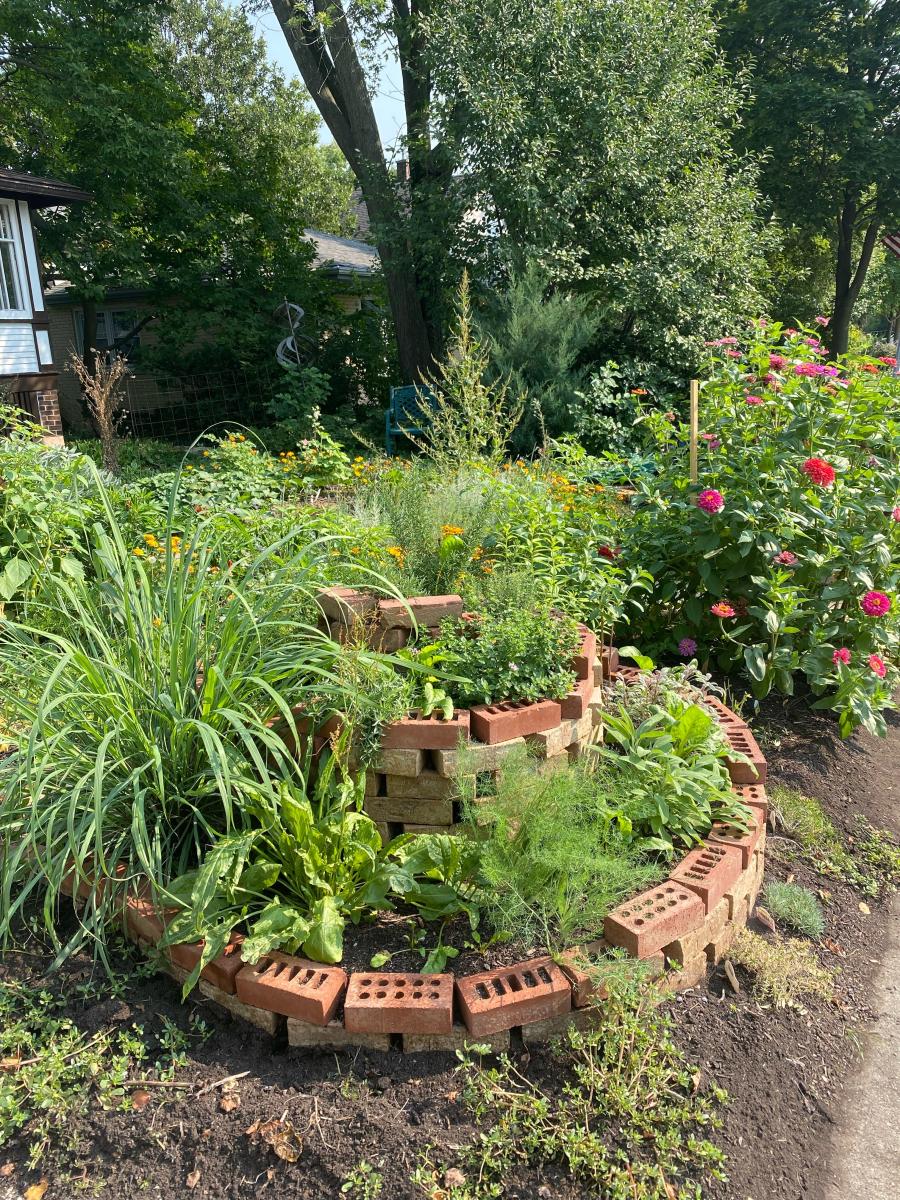Neighbor2Neighbor: A Community Action Research Project to Scaffold Transitions Towards Sustainability

Welcome to our blog series, CEE-Change, Together. Each month, NAAEE will post narratives from the CEE-Change Fellows as they implement their community action projects and work to strengthen environmental education and civic engagement capabilities, all supporting the mission of cleaner air, land, and water. Join us on their journey! The Civics and Environmental Education (CEE) Change Fellowship is NAAEE’s newest initiative to support leadership and innovation in civics and environmental education in North America. This ee360 program is a partnership between NAAEE, US EPA, and the Cedar Tree Foundation.

For as long as I can remember I have loved nature and the outdoors. The home where I live with my partner David—also a CEE-Change Fellow—reflects that. We enjoy gardening and are committed to caring about the environment through our practices. As Fellows, we created a Community Action Project (CAP) that uses action research methods to work towards community sustainability goals, particularly the transformation of grass lawns to sustainable yards.
Action research is a cycle of inquiry and action in which you REFLECT > PLAN > ACT > OBSERVE and then repeat, towards a particular end goal. This type of research is great when you want to improve practices over time, allow the process to inform decision making, and support changes along the way with data.
The project, Neighbor2Neighbor, is an environmental education and civic engagement project to surface community funds of knowledge about the practices and politics of placemaking and to identify barriers and opportunities, all through a dialogic inquiry lens with a goal of transitioning towards sustainability. Simply said, the goal is for people to convert their grassy lawns into sustainable yards, and we are interested in understanding the best way to make that happen.
Action research starts with a few broad framing questions that are probing and enduring, such as:
- How do we transition to sustainability in the northwest suburbs of Chicago—and worldwide?
- What happens when we engage individuals, groups, neighborhoods, and institutions to move towards sustainability?
As part of this first step, we also defined some sub-questions to guide the first cycle of action research.
- What funds of knowledge exist in the community?
- What barriers and opportunities emerge from engagement?
With these questions in mind, the next step was taking action and collecting data along the way. Both David and I are learners and educators in the community. It was important to us to look, listen, and get to know people, stories, and places that were pursuing these questions, perhaps modeling answers or open to exploring them through public dialogue and civic action. And the locus of action was what one might imagine, in the yards of homeowners and apartment dwellers, in the neighborhood blocks and parkways of the village, lawn by lawn. Over the past decade, we’ve slowly transitioned our backyard using permaculture principles as a way to learn, model, and share more sustainable practices in our household and neighborhood.
Permaculture, short for “permanent agriculture”, is an informal environmental education practice that has grown globally over the past 50 years. It draws from a broad set of techniques and organizing strategies largely concerned with transitioning individual and community land use and ways of living towards ecological practices.

This year we rapidly transformed our front yard as well. We wanted to do this because it is public-facing and thus would spark conversations with passersby, as well as provide an accessible location for workshops by providing a neighborly curbside street stage for community learning and action. We’ve held two demonstration workshops about sheet mulching and creating an herb spiral, and we deliberately engage with neighbors, dog walkers, and visiting revelers alike in continuous learning cycles of dialogue and collaborative project development. As intended, the activity in our front yard has been a welcome invitation for the knowledgeable and the curious alike.
We also began photographing and mapping other front yards in the neighborhood that show awareness and attention to moving away from grass and towards native plants, perennials, prairie plants, pollinator host plants, etc. Some of these yards include certification signs from National Wildlife Federation, Conservation[at]Home, Monarch Waystation, and other programs. We’re using this information to create a rubric that can be used for documenting and assessing a front yard quickly, something we intend to employ with citizen scientists in the future.
Additionally, we had a table at the local Farmer’s Market to engage with the public and encourage people to “Kick the Habit” of lawn mowing and convert their yards. We recorded conversations and interviews and also modeled vermicomposting of household food waste. The worms were a big hit with the kids!
We’ve learned a lot along the way, and connected with individuals and groups that have some overlap with our work.
I want to discuss some of our initial findings and how they will inform our next steps. With regard to identifying barriers to conversion, we’ve heard a lot of things, such as:
- “I would love to have something other than grass, but I don’t even know where to start.”
- “That seems like a lot of work!”
- “Isn’t there a village ordinance against plants that are taller than 18 inches?”
- “How do you know what to plant?”
- “We don’t have time to garden, so we just use a landscaping service and keep it simple.”
- “I work hard to have a weed-free yard.”
- “You can’t just plant whatever you want on the parkways, that would get out of hand.”
From these responses, we know that people need scaffolds to learning to feel supported as they make changes. Additionally, it will be important to do some myth-busting with regard to incorrect assumptions about sustainable yards. We will also need to work on growing acceptance and appreciation of the different aesthetic of a sustainable yard, at the individual level and also at the municipal ordinance level. We have a better awareness of how certifications and signage can legitimize the practice of lawn conversion and planting native plants, pollinator plants, habitat plants, and food plants. In many cases, the conversations reflect the limits of civic knowledge about how land use rules are made and the politics and procedures for how they might be changed, whether through negotiation between neighbors and institutions or through participatory political engagement with local and national governments or institutions.
What’s next?

We’re creating additional workshops to help people feel comfortable with permaculture techniques. We’re creating community connections through meetups, online calls, and social media groups so that we can find each other, support each other, ask questions, and invite others in. We have joined Go Green Illinois and created the Go Green Arlington Heights chapter and a Facebook group to serve as a container for continued sustainability conversations and connections.
We are about to hold the first-ever “Arlington Heights Sustainable Yard Tour”, featuring six different properties with different sustainability practices and examples, including vermicomposting, prairie plants, potato towers, pollinator gardens, native plants, rain barrel use, pesticide alternatives, perennial food sources, bokashi compost fermentation, and plant foraging.
As we’ve engaged neighborhood and community networks and institutions, some of the larger questions of the politics of placemaking have come into focus. What is to be done about ‘edges’ where properties meet? How can we impact policy and practice at the municipal level? How can we be in relationship with other similar projects around the globe? We look forward to sharing more about this aspect of our work in David’s blog post later this year, and we welcome comments here as well.
We are creating a toolkit to be shared with others who are having similar conversations and conversions in their own communities, and we look forward to connecting with others at our October 15 session, "Beyond Borders: Placemaking is Political. A Neighbor2Neighbor Action-Research Toolkit", at the upcoming NAAEE Conference in Tucson, Arizona. We hope to see you there!